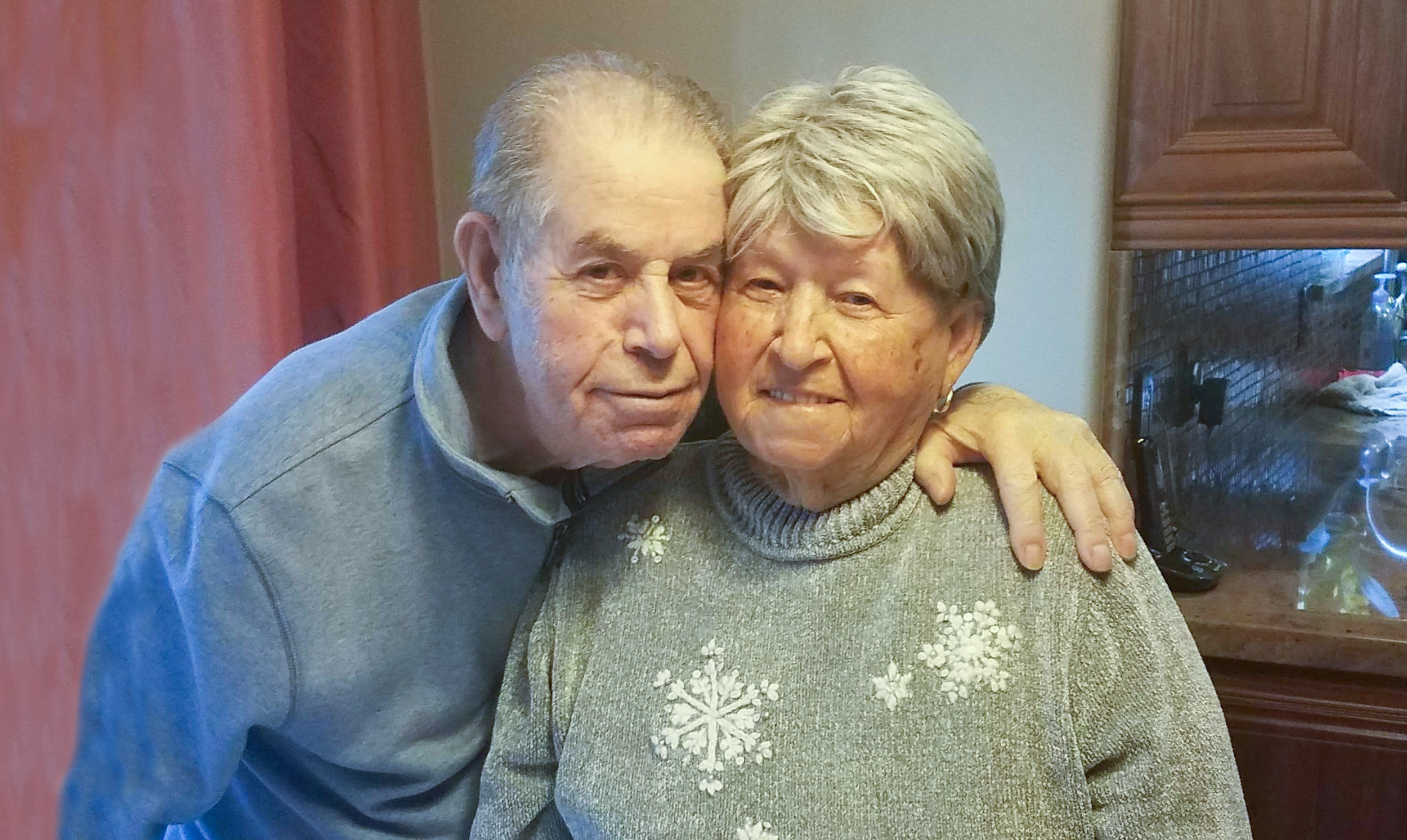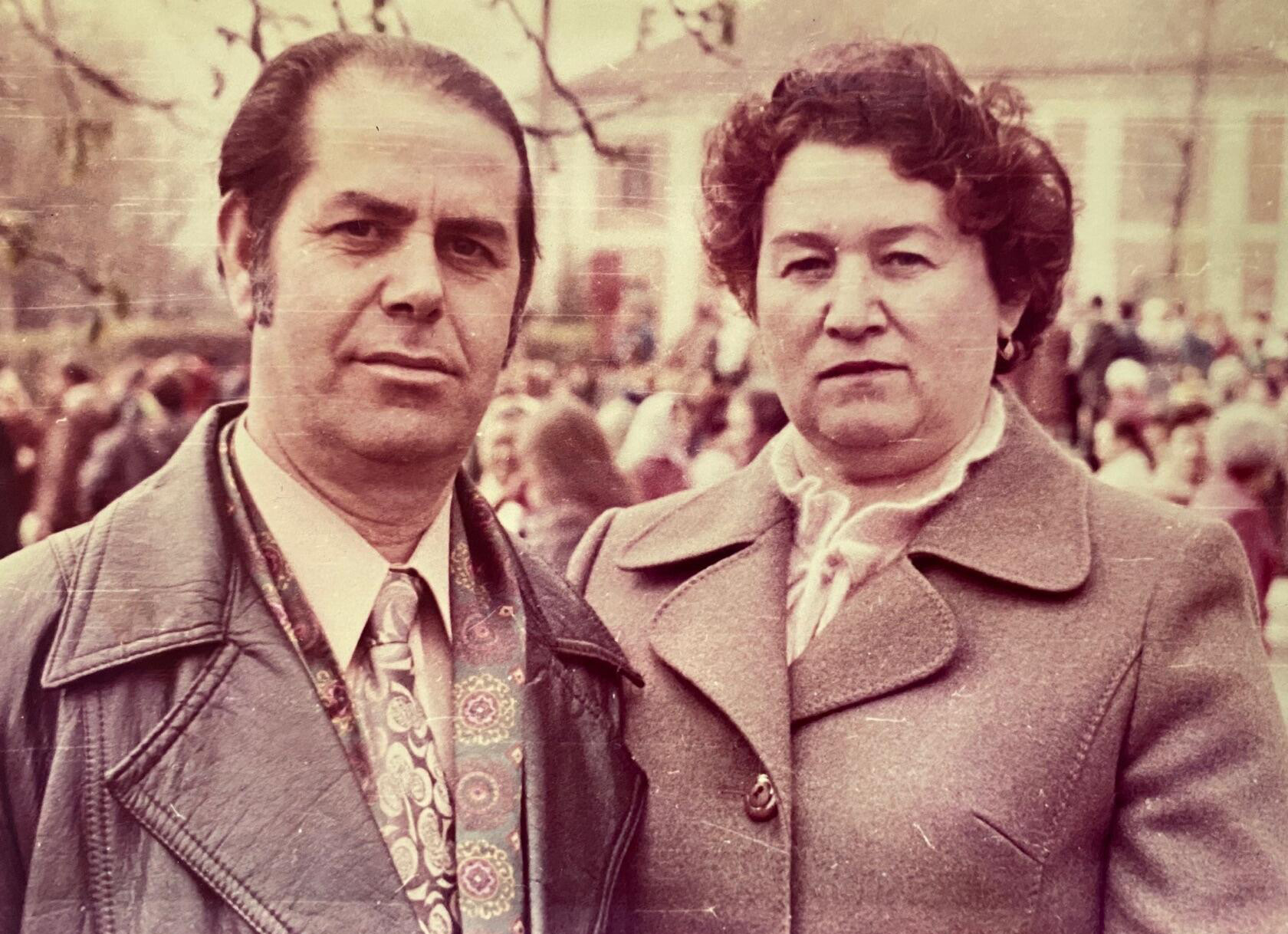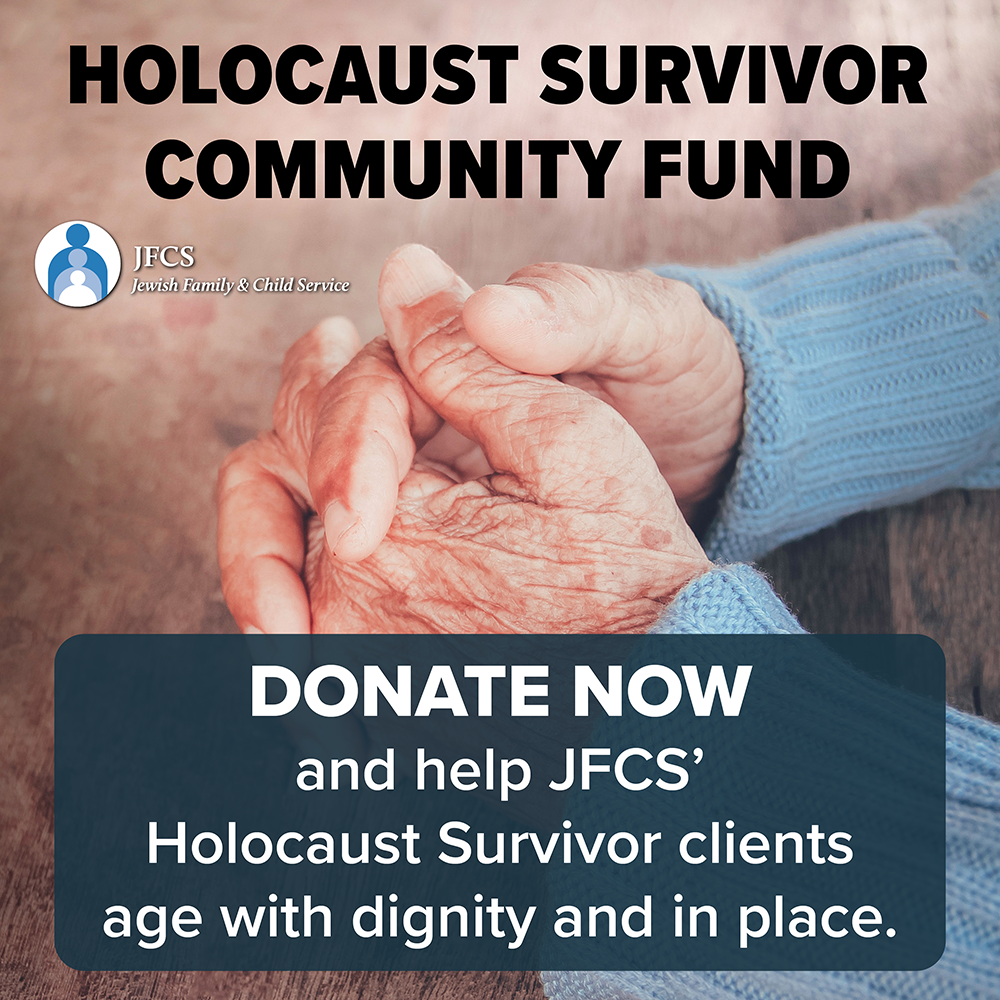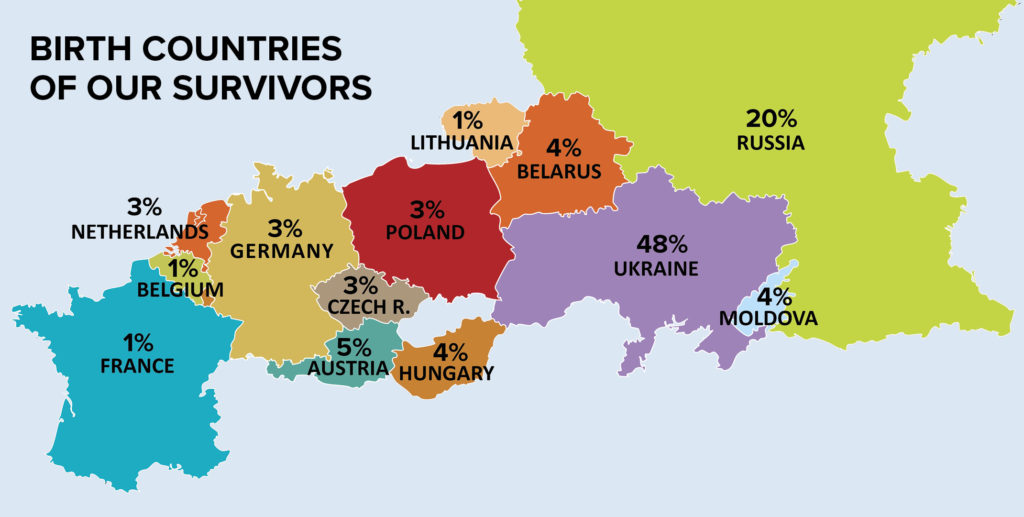Isaak’s Story of Survival
Watch the short video above to hear about Isaak’s life in his own words.
Read below for more on his story of survival.

At the start of World War II, 18,000 Ukrainians – 14,000 of them Jews – called Tulchin, Ukraine home. When Isaak Govshiyevich returned there at war’s end, only 14 years old at the time, about 5,000 people were left. Today, only 40-some Jews remain in the place in Western Ukraine where Isaak and his 11 siblings’ childhoods came to an abrupt end in 1941.
Today 91, hair thinning, back aching, mobility a challenge, Isaak nonetheless speaks with an energetic lilt as he shares his harrowing story of World War II, conscription into the Red Army after 1945, his work as a hat maker and his eventual move across the planet to Portland, where JFCS helped resettle him and his small family. He and his wife, Sima, also from Ukraine and a Holocaust Survivor, recently celebrated a quarter century in the Rose City.
Speaking in Russian with his granddaughter, Elena, translating, Isaak recounted that Romanian and German soldiers invaded his town on June 22, 1941. As the Red Army retreated, the Axis soldiers “burned a big store down and began robbing people.”
Then they began targeting the Jews, rounding them up and sending them first to a ghetto, then into a camp. Mertvaya Petlya, or Dead Loop in English, was converted from a mansion, where tuberculosis patients had been housed, into a concentration camp. Located a nearly 20-mile unforgiving walk from town, Isaak said, “Lots of people were killed along the way.”
He recalls the slog, alongside his parents, siblings, nieces, nephews and other relatives – sometimes finding temporary respite in horse stables – to Dead Loop. Stuffed in “like sardines in a can,” Isaak said of the camp, people began dying of hunger, thirst and cold. Isaak said Typhus claimed his mother, and the Politzei killed two of his sisters. The Nazi-sympathizing law enforcement officers also shoved many victims to their death in the nearby river.
“I knew lots of people [who died] but I can’t remember their names because I was young,” Isaak said of his 10-year-old self. All told, he spent nearly two years in the ghetto and two years in the camp. In March 1944, the Red Army liberated Isaak, Sima, and the rest of the Survivors. He lost seven of his siblings. Back in the greatly diminished town of his birth, Isaak completed high school before being conscripted into the Red Army; he served in Siberia until Josef Stalin’s death in 1953.
 “My life was pretty hard,” said Isaak, recalling that in Soviet Russia, no one could talk about the war, the tragedies they faced, the loves they lost.
“My life was pretty hard,” said Isaak, recalling that in Soviet Russia, no one could talk about the war, the tragedies they faced, the loves they lost.
An adult, Isaak joined his family’s clandestine business fashioning ushankas, the traditional Russian mink hats with ear flaps. Until, that is, Russian Jews began leaving the Soviet Union en masse, his brother included, who in 1988 resettled his family in Portland. Soon, Isaak and Sima yearned to reunite with family, the scars of so many lost in the war still very fresh.
With then-19-year-old granddaughter Elena in tow, Isaak and Sima arrived in Portland on Jan. 7, 1998. Jewish Family & Child Service already had been alerted to their arrival and had prepared an apartment for them in which to begin their new lives. “It was pretty nice to actually open the door and see it furnished,” said Elena, now a nurse and with an adult daughter of her own.
“I remember there was furniture, kitchen utensils, all provided,” Isaak said. “My brother explained it was because of JFCS.”
JFCS has been there, providing dentures, a stair lift to their second-story apartment once Sima’s mobility suffered, cooking services, meal deliveries and more.
“I appreciate the things all the services provide,” Isaak said.
Double your impact with a dollar-for-dollar match up to $500,000 from the Renée Holzman Challenge Grant for Holocaust Survivors
For more about the Holzman Challenge Grant and the philanthropist behind it, read The Jewish Review’s article, “Challenge grant to aid Shoah victims.”


